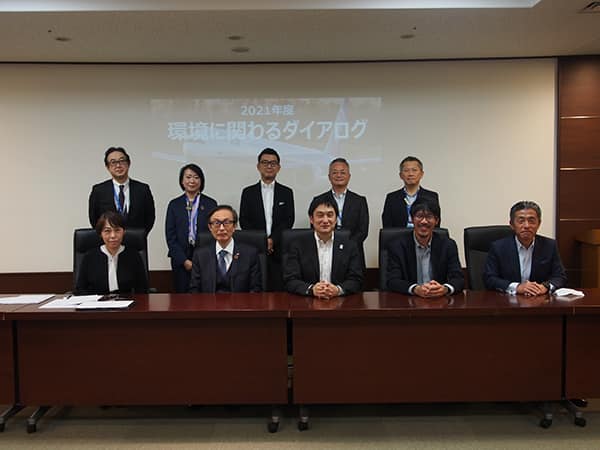Dialogue with Experts on the Environment
Major Activities in FY2021
Dialogue with Experts on the Environment
In December 2021, we held a dialogue with environmental experts.
At the 26th session of the Conference of the Parties to the United Nations Framework Convention on Climate Change (COP26), based on the fact that the international community has clearly shifted its focus from the 2 °C target to the 1.5 °C target, we shared information and received opinions on issues related to the ANA Group's environmental targets announced in April 2021, as well as on climate change and biodiversity.


Theme: Progress of Initiatives for the ANA Group's Environmental Targets
Date and Time: December 22, 2021, 13:30-15:30
Experts
Naoyuki Yamagishi (Director, Climate & Energy and Oceans & Fisheries,WWF Japan)
Yasushi Hibi (Vice President, Conservation International)
General Coordination
Caux Round Table Japan
Hiroshi Ishida (Executive Director)
Mizuki Ode
ANA HOLDINGS INC.
Naoto Takada (Member of the Board of Directors, Executive Vice President)
Chikako Miyata (Senior Vice President, Director of Corporate Sustainability), and others
Main Opinions from Experts
Climate Change Initiatives and Environmental Targets
- In reducing CO2 emissions in the aviation industry, it is important to set reduction targets in line with international decarbonization standards such as SBTi and targets for the introduction of renewable energy, and to disclose information. In addition to issues such as the stable supply and sustainability of SAF, in regard to the small number of suppliers who provide sustainable foodstuffs for in-flight meals (certified foodstuffs, etc.), it is expected that the ANA Group will step forward and demonstrate leadership by involving other companies in the industry and suppliers, etc. Although the company cannot resolve issues including restrictions on SAF by itself, it needs to do everything it can to address this 1% of the problem. The external evaluation of ANA's environmental initiatives as a whole will be greatly changed by its initiatives and achievements regarding this 1% by promoting energy conservation in its own facilities and vehicles, introducing renewable energy, and transitioning to EVs and fuel cell vehicles.
- The SBTi does not recognize the use of credits, and target levels are determined based on how much emission reduction each industry needs to have achieved without using credits when the world achieves net zero. However, the aviation and shipping industries are internationally recognized as hard-to-abate industries in which it is difficult to reduce CO2 emissions, and decarbonization frameworks such as CORSIA have been established as exceptions. Under CORSIA, however, the common understanding is that credits are to be used as a last resort. Since the goal is to achieve the same 1.5 °C target, it is necessary to focus on achieving the target through feasible and effective initiatives.
- The need to increase the amount of carbon absorbed by forests in order to achieve net zero has recently led to a reassessment of forest protection in the context of climate change action. The adoption of nature-based solutions as an integrated approach leading to the protection of the natural environment and a solution to climate change is accelerating.
Climate Change and Biodiversity
- Biodiversity conservation initiatives are initiatives to protect nature and include everything from ensuring the sustainability of foodstuffs used in in-flight meals to deforestation and plastics as marine pollution. In the aviation industry, for example, clean air and a stable air environment are enjoyed as a matter of course, but this can be said to depend on nature. SAF itself is also a field dependent on the natural environment. In general, the starting point is to identify, analyze, and prioritize what business is dependent on and what business is impacting in regard to the natural environment and resources. Tools supporting this initial step such as ENCORE, developed mainly by UNEP, should be referred to.
- The absence of physical risks (damage to business caused by climate change) does not mean that biodiversity is irrelevant to the company. Regardless of the presence or degree of physical risks, transition risks (restrictions placed on business by social mechanisms and movements responding to climate change, and risks of missing those trends) must also be taken into account. In particular, failure to keep up with movements such as environmental due diligence and zero deforestation is a major risk and can lead to loss of confidence from investors, and therefore must be given attention.
- Because biodiversity initiatives are still less formalized than those regarding climate change, taking this opportunity and acting now could make it possible for the company to play a role in rulemaking. It is expected that the foundation for ANA's environmental initiatives will be further strengthened through acquiring personnel with extensive knowledge in this field and obtaining external cooperation, including collaboration with NGOs.